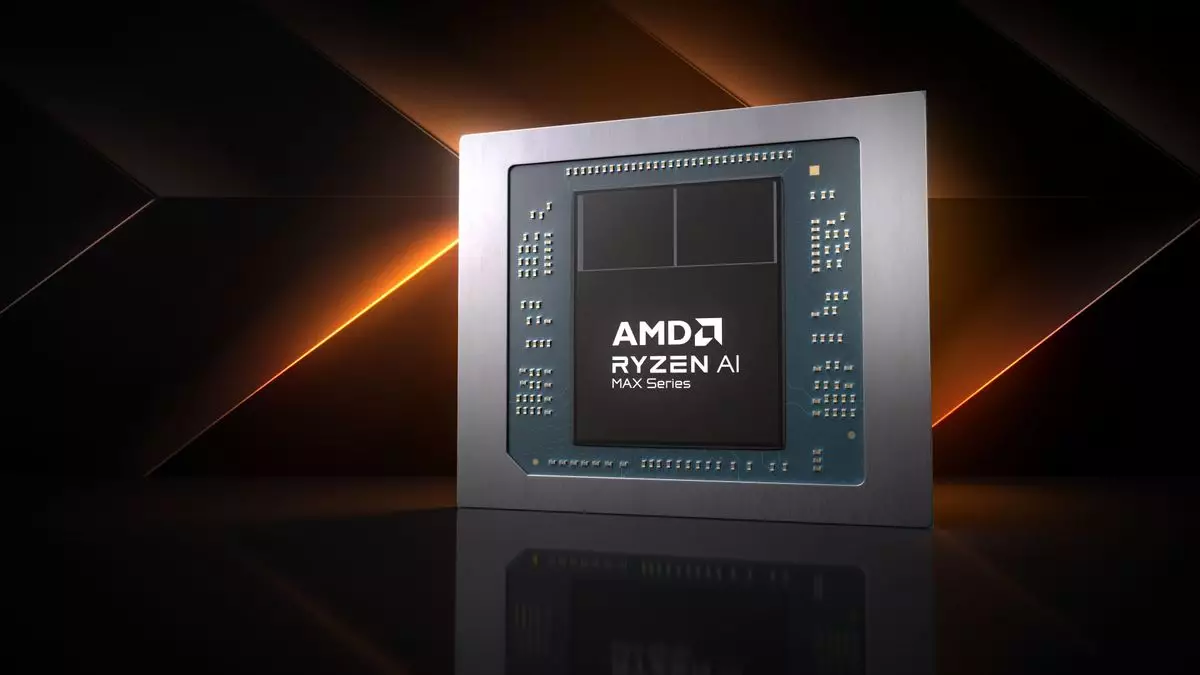AMD has been at the forefront of the APU market, continuously innovating and pushing boundaries. The Strix Halo APU, AMD’s latest and largest Integrated Processor Unit yet, has recently garnered attention following its debut in 3DMark Time Spy benchmarks. These early performance results, while promising, hint at potential shortcomings that may cause enthusiasts to recalibrate their expectations. In this article, we delve into the benchmarks and the implications for gaming laptops powered by this cutting-edge chip.
Recent reports via the Baidu forums, amplified by tech news outlets such as Wccftech, have revealed some intriguing benchmark results for the Strix Halo APU. The device recorded a GPU score of 10,106 and a CPU score of 5,571 in 3DMark Time Spy. For context, let’s break down these figures: the GPU score positions the APU above the average benchmarks for RTX 4050 laptop GPUs while trailing closely behind the RTX 4060. This suggests that while the Strix Halo shows commendable graphics prowess, it might not deliver on the level AMD initially led consumers to believe—there remain whispers of the potential of matching RTX 4070 performance.
AMD’s dedicated effort to elevate integrated graphics performance through the Strix Halo marks a significant milestone; however, it also raises pertinent questions regarding the trade-offs in gaming performance. It is important to recognize that these benchmark scores, while essential indicators, do not present a complete picture of gaming performance. The 3DMark is a synthetic benchmark primarily focused on graphics processing capability, meaning real-world gaming scenarios may present different results. As the industry knows, actual performance hinges on a myriad of factors—from game optimization to thermal constraints in laptops.
Moreover, the Strix Halo’s setup without a discrete GPU distinguishes it from its RTX counterparts, emphasizing the evolution of integrated graphics. Anticipated gaming performance matching that of the RTX 4060 could make the APU particularly appealing for compact gaming solutions, such as ultra-thin laptops and the increasingly popular tablet form factor.
One of the critical aspects touted by AMD concerning the Strix Halo is its new architectural design featuring Zen 5-based CPU Core Complex Dies (CCDs). This redesign is not merely cosmetic; it addresses previous limitations observed with the Ryzen 9 9950X, particularly in power efficiency. AMD’s focus on enhancing power efficiency is vital, especially in the context of gaming laptops, where battery life is constantly being challenged by the demand of high-performance components.
However, the configurable wattage of the Strix Halo extends up to 120 W, and such variability can lead to significant fluctuations in actual performance based on power settings. This aspect is a double-edged sword: greater wattage could yield better performance in demanding scenarios, yet it may also put pressure on thermal management, especially in compact devices known for having limited cooling solutions.
The implications of these benchmark results and architectural features are profound for the gaming hardware landscape. As the competition between GPU and APU-makers intensifies, AMD’s Strix Halo may set a new benchmark for integrated performance. Providing gaming akin to that of mid-tier dedicated GPUs in a portable format could ignite a new wave of interest among gamers who favor mobility without sacrificing quality.
Nevertheless, the initial benchmarks suggest that AMD may need to refine their expectation management strategies to align closer with consumer hopes. While the goal of reaching RTX 4070 capabilities is ambitious, the data points toward a potential reality closer to the RTX 4060. It is crucial for AMD to leverage this momentum and continue iterating on its designs to meet consumer demands and ensure its place as a leader in the APU sector.
The AMD Strix Halo APU is a force to be reckoned with in the evolving landscape of gaming technology. While it shows promise, potential buyers and enthusiasts should temper their expectations as the technology matures and more real-world performance data become available. The future holds significant prospects for this robust APU, and it will be fascinating to watch how it evolves in the coming releases.


Leave a Reply